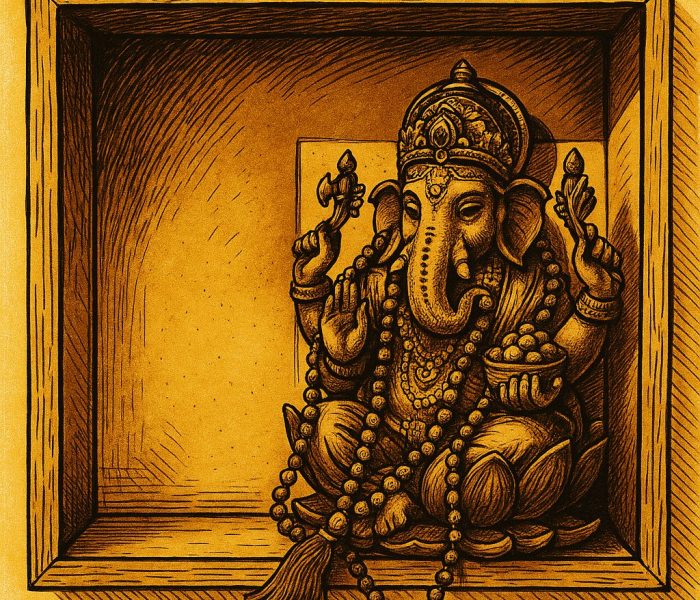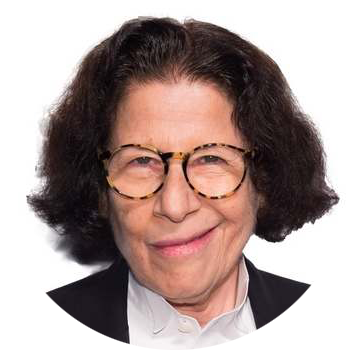In this article you will read about:
Introduction to Dharma
Dharma is one of the most important and misunderstood concepts in Hindu philosophy. Often translated simply as duty, ethics, or religion, dharma actually refers to a multidimensional principle that connects cosmic order, individual purpose, and right action. At its core, dharma is the intelligent structure that keeps everything—from galaxies to human emotions—functioning in harmony (Radhakrishnan & Moore, 2020).
For a modern seeker, dharma functions as both a spiritual compass and a psychological framework for making aligned, meaningful decisions. Understanding dharma can clarify why certain paths feel “right,” why misalignment causes inner conflict, and how individuals can evolve consciously rather than reactively.
Dharma as Cosmic Order: The Foundation of Harmony
Hindu texts describe dharma as the underlying pattern that sustains balance in the universe. The Ṛg Veda associates dharma with ṛta, the cosmic rhythm that holds the world together (Doniger, 2022). This principle is not external or imposed; it is woven into the structure of reality itself.
Where Western frameworks often separate the moral, personal, and cosmic, Hindu thought integrates them. Living according to dharma means acting in a way that aligns personal choices with universal coherence (Clooney, 2019). When one’s actions support harmony, flourishing occurs naturally. When actions oppose dharma, disorder emerges.
Personal Dharma (Svadharma): The Individual Path
Hindu philosophy distinguishes between universal dharma (sādhāraṇa dharma) and individual dharma (svadharma).
Your svadharma refers to the unique set of qualities, responsibilities, psychological tendencies, and life circumstances that shape your specific path (Gupta, 2018).
This idea parallels modern personality systems and individuation theory: not everyone is meant to follow the same road. The Bhagavad Gītā emphasizes that it is better to follow one’s own dharma—even imperfectly—than to imitate someone else’s perfectly (Bhagavad Gītā 3.35; Sivaraman, 2020).
For contemporary readers, svadharma can be understood as:
Your authentic strengths
Your natural temperament
Your responsibilities and roles
Your inner callings
The evolutionary path you feel pulled toward
When individuals ignore their svadharma, they may succeed externally but feel internally fragmented or directionless. When they honor it, they experience congruence, flow, and a deeper sense of meaning.
Dharma and Right Action (Karmic Alignment)
Dharma is also closely linked to karma—the principle of cause and effect. Hindu texts emphasize that right action (karma yoga) arises from aligning intentions, behavior, and context with dharma (Easwaran, 2019). This does not mean moral perfectionism; rather, it refers to conscious, non-reactive action that supports growth and minimizes unnecessary suffering.
Right action in the dharmic sense involves:
Acting without attachment to outcomes
Choosing what supports long-term harmony, not momentary impulses
Taking responsibility for one’s inner state
Acting from clarity rather than compulsion
This aligns with psychological principles of self-regulation, value-driven behavior, and long-range thinking.
The Four Dimensions of Dharma
Hindu philosophical traditions describe dharma across four interconnected dimensions:

Universal Dharma
Ethical principles shared by all humans (compassion, honesty, non-harm).

Social Dharma
Responsibilities tied to societal roles (teacher, parent, healer, leader).

Stage-of-Life Dharma (Āśrama Dharma)
Duties appropriate to life phases—student, householder, retiree, renunciate.

Personal Dharma (Svadharma)
One’s unique temperament, talents, and spiritual trajectory.
How Dharma Guides Life Purpose
In modern terms, dharma acts like an inner navigation system. Rather than prescribing a single vocation, it reveals the psychological and spiritual pattern that shapes your purpose.
Dharma helps individuals:
Understand why certain paths energize them
Make decisions aligned with long-term integrity
Navigate moral ambiguity with clarity
Avoid paths that distort their character or drain vitality
Experience meaning even during difficulty
Purpose, from a dharmic perspective, is not discovered once—it is realized continuously through conscious engagement with life.
Dharma and Personal Evolution
Dharma is ultimately a tool for self-transformation. By aligning action with inner truth, individuals refine their character, reduce karmic inertia, and move toward greater psychological integration. In this sense, dharma becomes a bridge between ego-level choices and Self-level wisdom (Feuerstein, 2014).
For spiritual seekers, following dharma gradually dissolves inner conflict and reveals a deeper identity—one less defined by conditioning and more aligned with the Atman, the true Self.
Practical Activity: Mapping Your Dharma in 5 Simple Steps
Understanding dharma is powerful. Living it is transformational. Use this guided activity over the next few days to clarify your personal dharma and translate it into concrete action.
Tip: Use a journal or notes app for this. Come back to it at least 3 times in one week—your answers will deepen.

Scan Your Life for Moments of Alignment
Look back over your life and identify 3–5 moments when you felt deeply right in yourself—calm, energized, and clear, even if the situation was challenging.
For each moment, write:
What was happening?
What were you doing?
How did your body feel?
What values were you honoring (e.g., truth, courage, creativity, service)?
Pattern check:
What do these “aligned moments” have in common? This is your svadharma (personal dharma) quietly revealing itself.

Name Your Non-Negotiable Values
Dharma always aligns with your deepest values, not your temporary preferences.
Write down 10 values that matter to you (e.g., freedom, loyalty, growth, honesty, compassion, mastery).
Narrow them down to your Top 5.
Now circle your Top 3 non-negotiables—the ones you refuse to betray without feeling sick inside.
Journal prompt:
“When I act against these 3 values, I feel out of alignment with my dharma because…”
This step connects universal dharma (ethics) with your personal path.

Clarify Your Current Roles and Responsibilities
Dharma is contextual. It expresses differently in each role you play and stage of life you’re in.
List your current roles (examples):
Individual: seeker, student, creator, healer, builder
Relational: partner, parent, friend, colleague
Professional: therapist, engineer, artist, teacher, entrepreneur
For each role, answer:
“What does right action look like here, according to my Top 3 values?”
“Where am I currently out of alignment in this role?”
“What is one small dharmic adjustment I could make this week?”
This translates a vague sense of “purpose” into specific, real-world behaviors.

Identify Your Dharmic Friction Points
Anywhere you consistently feel drained, resentful, or numb is usually a dharmic friction point—a place where you’re ignoring inner truth, staying in the wrong structure, or overidentifying with expectations.
Answer honestly:
Where in my life do I feel I’m acting against my inner truth?
What am I tolerating that feels off or forced?
What fears keep me in this misalignment (e.g., judgment, financial insecurity, abandonment, failure)?
Now, for each friction point, write one dharmic micro-step:
“A small action that would move this area 1% closer to alignment is…”
No drama, no grand gestures. Dharma often shifts through 1% adjustments repeated consistently.

Create a 7-Day Dharma Experiment
Turn insight into a concrete 7-day experiment. The goal is not perfection but alignment practice.
Choose 3 small, specific actions that embody your dharma:
One for self (e.g., 10 minutes of honest journaling daily instead of scrolling).
One for relationships (e.g., one radically honest, kind conversation you’ve been avoiding).
One for work or creation (e.g., one focused hour on the project that feels most alive to you).
Write them as clear commitments:
“For the next 7 days, I will…”
At the end of each day, ask:
“Where did I act in alignment with my dharma today?”
“Where did I go against it, and what did I learn?”
By the end of the week, review:
Which actions gave you more energy, clarity, or inner peace?
Which actions clearly pulled you out of dharma?
What will you keep, adjust, or release going forward?
Optional Deepening: A One-Sentence Dharma Statement
After working through the steps, try to write a one-sentence dharma statement:
“My dharma, in this stage of life, is to [how you serve / express], using [your key strengths], in a way that honors [your Top 3 values].”
You can refine this over time. It’s not a rigid label; it’s a living compass you update as you evolve.
FAQ
Most frequent questions and answers about Dharma, Life Purpose, and Right Action
In simple terms, dharma is your aligned way of living. It’s the set of choices, values, and actions that keep you in integrity with yourself while also supporting harmony around you. It includes ethics, personal purpose, and context—what is right for you in a given situation, not just a fixed rulebook.
Not exactly. While dharma includes ethical principles, it is broader than religion or rigid morality. Dharma is about alignment with cosmic order, inner truth, and context. Two people can make different choices in the same situation and both be acting dharmically if their actions are honest, non-harmful, and true to their svadharma (personal path).
You discover your svadharma by noticing where you feel most authentically yourself:
Activities that give you energy rather than drain you
Roles where you naturally step into competence or leadership
Situations where your core values are fully expressed
Journaling about “moments of alignment,” clarifying your top values, and observing consistent patterns in your strengths and callings are practical ways to map your svadharma.
Karma is the principle of cause and effect; dharma is the principle of right alignment. When you act according to dharma—clear intention, integrity, and responsibility—you create karma that supports growth, clarity, and inner peace. When you act against your dharma, you tend to generate confusion, friction, and patterns that keep repeating until they are consciously worked through.
The core pattern of your dharma (your deepest values and temperament) stays relatively stable, but its expression absolutely changes over time. Your dharma as a student, a parent, a healer, or a leader will look different at each life stage. Think of dharma as a living compass: the direction (integrity, growth, service) stays consistent, but the specific path and terrain evolve as you do.
Hinduism & Psychology Book Recommendations
Here is a collection of the best books on the market related to Hinduism & Psychology:
Our commitment to you
Our team takes pride in crafting informative and well-researched articles and resources for our readers.
We believe in making academic writing accessible and engaging for everyone, which is why we take great care in curating only the most reliable and verifiable sources of knowledge. By presenting complex concepts in a simplified and concise manner, we hope to make learning an enjoyable experience that can leave a lasting impact on our readers.
Additionally, we strive to make our articles visually appealing and aesthetically pleasing, using different design elements and techniques to enhance the reader’s experience. We firmly believe that the way in which information is presented can have a significant impact on how well it is understood and retained, and we take this responsibility seriously.
Click on the icon to see all your thoughts in the Dashboard.
Your Thoughts about Dharma & Right Action
It’s highly recommended that you jot down any ideas or reflections that come to mind regarding Dharma and Right Action, including related behaviours, emotions, situations, or other associations you may make. This way, you can refer back to them on your Dashboard or Reflect pop-ups, compare them with your current behaviours, and make any necessary adjustments to keep evolving. Learn more about this feature and how it can benefit you.
References
- Bhagavad Gītā. (2020). In S. Sivaraman (Trans.), The Bhagavad Gita: A contemporary translation. Oxford University Press.
- Clooney, F. X. (2019). Hindu God, Christian God: How reason helps break down the boundaries between religions. Oxford University Press.
- Doniger, W. (2022). The Rig Veda: An anthology (2nd ed.). Penguin Classics.
- Easwaran, E. (2019). The Bhagavad Gita (2nd ed.). Nilgiri Press.
- Feuerstein, G. (2014). The philosophy of classical yoga. Inner Traditions.
- Gupta, R. (2018). Dharma and the individual: Ethics and ontology in Hindu thought. Routledge.
- Radhakrishnan, S., & Moore, C. (2020). A sourcebook in Indian philosophy. Princeton University Press.




